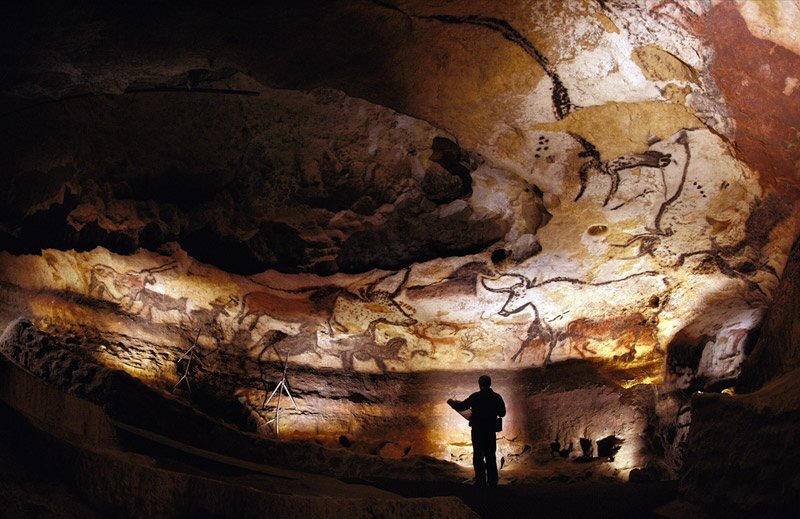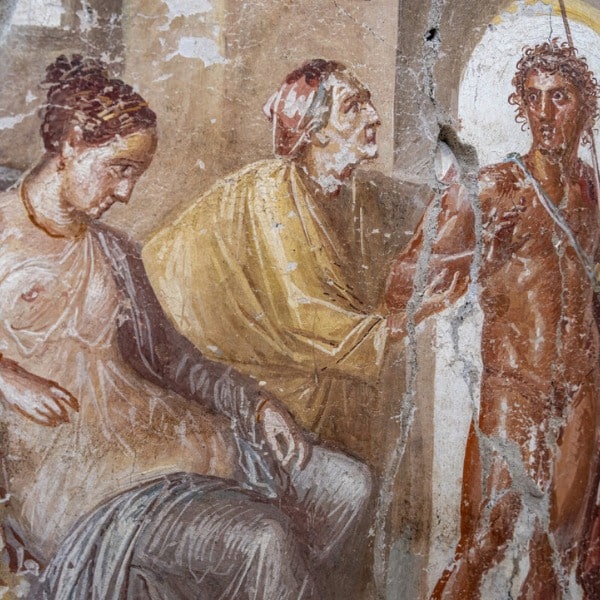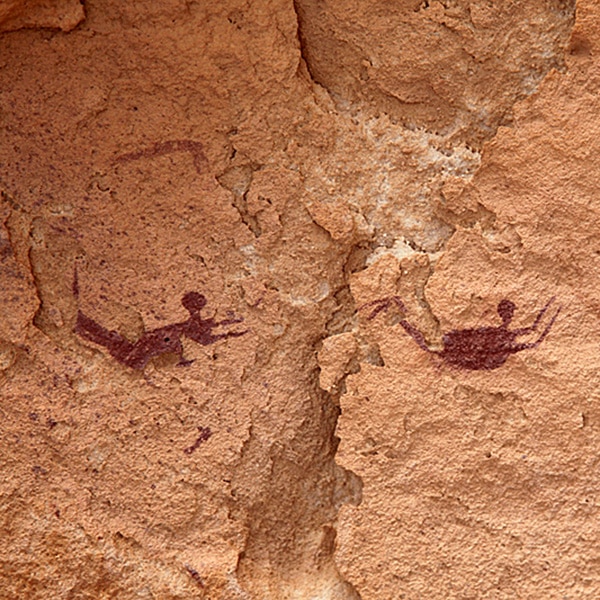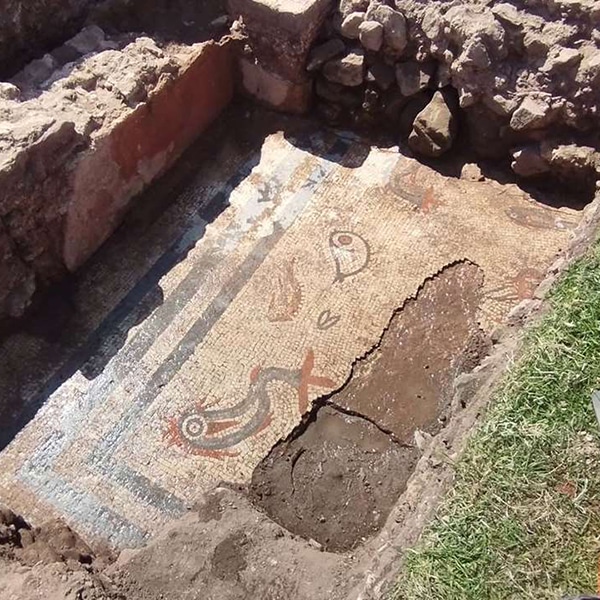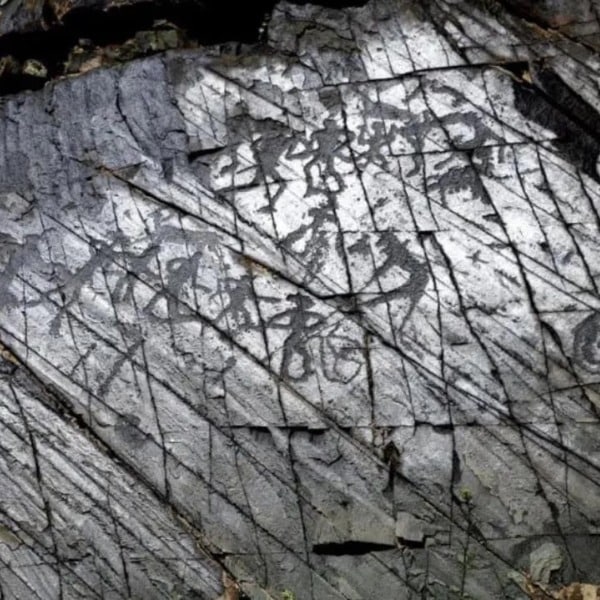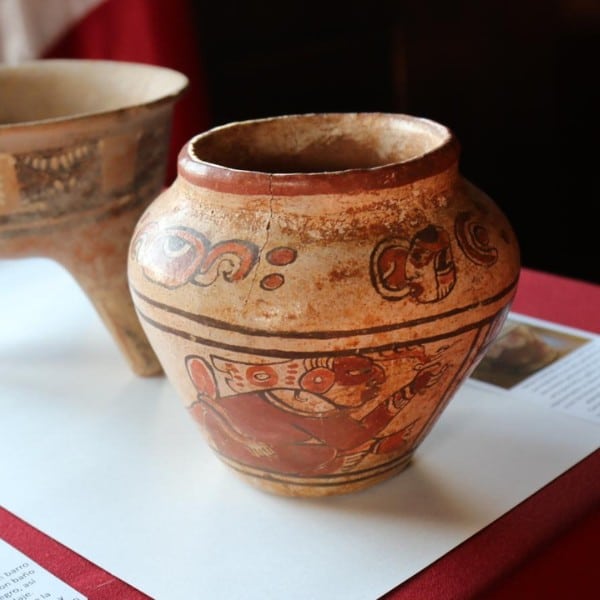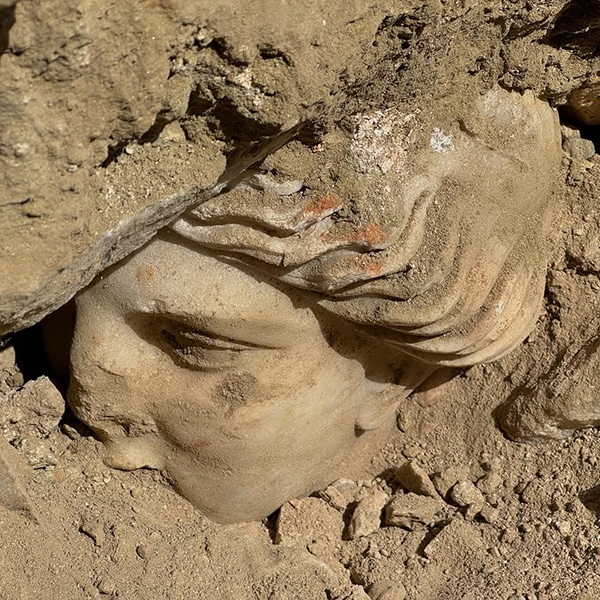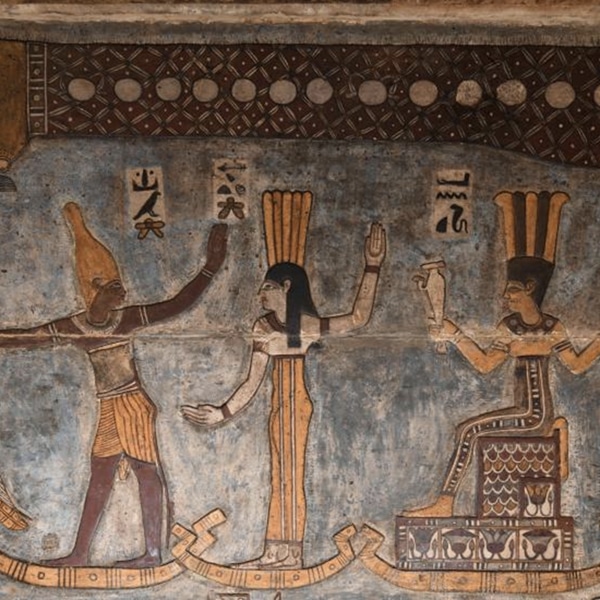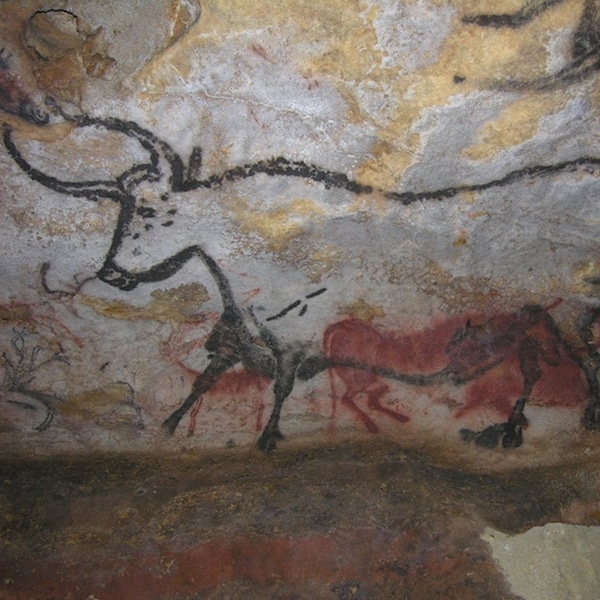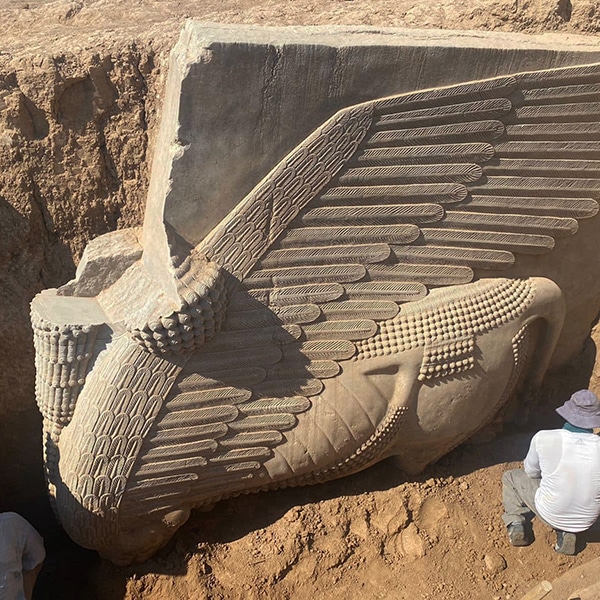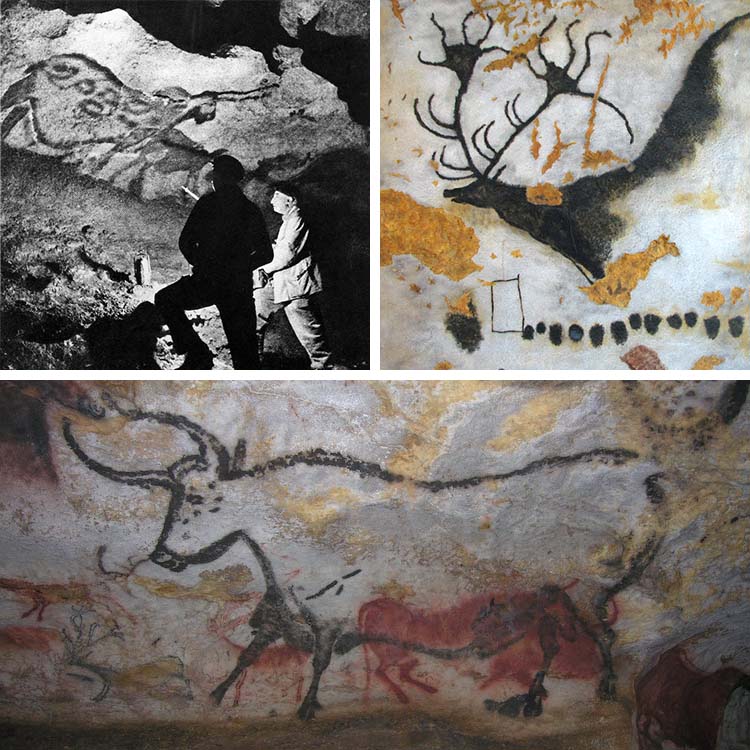
Ancient art gives us a glimpse into cultures that existed thousands of years ago. In Spain, the Altamira cave is a well-preserved example of paintings made in the Stone Age. However, it is not the only exhibit of prehistoric art. Just outside of a small village in southwestern France is the site of some of the most well-known examples of Paleolithic painting: the Lascaux cave.
Discovered in the mid-1900s, this series of underground chambers contains over 600 paintings—including over 2,000 figures—of animals that people hunted and feared during the Stone Age. While the real cave was closed to the public in 1963, the life-size replicas offer visitors a chance to see spectacular paintings made by people wanting to express themselves and their lives over 17,000 years ago.
Scroll down to learn more about Lascaux cave and its paintings.
What is the Lascaux Cave?
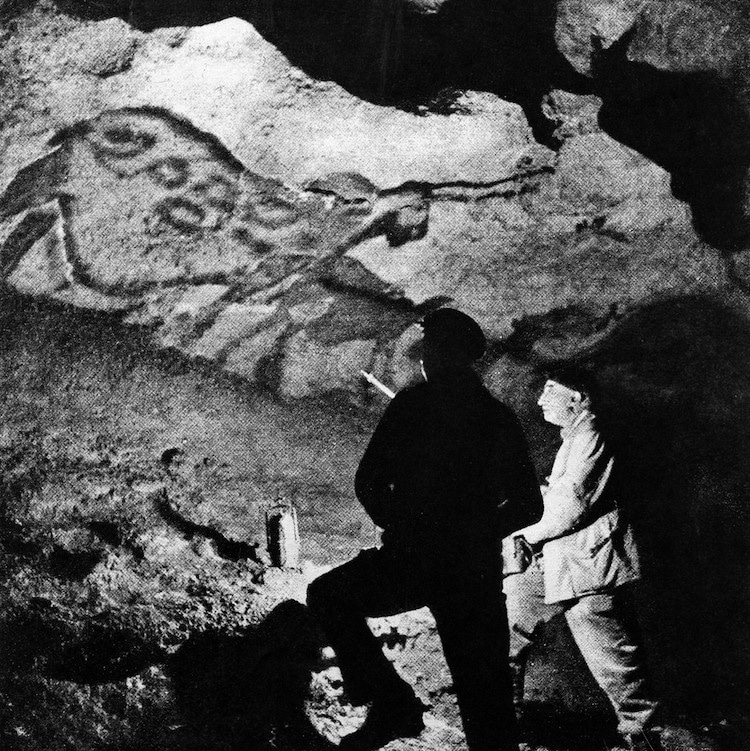
Abbe Breuil in Lascaux caves at La Mouthe (Photo: Wikimedia Commons, CC BY-SA 4.0 International)
The Lascaux cave is actually a web of multiple caves in southwestern France that are covered with wall paintings from the Upper Paleolithic era (between 50,000 and 12,000 years ago). It is believed that these galleries of images were made over generations about 17,000 years ago.
The site was first discovered in 1940 by a teenager just outside of the village of Montignac. He returned with a local priest, who recorded the findings in a series of drawings. Later, the site was fully excavated and they uncovered over 600 paintings on the walls and ceilings of the caves, which primarily depicted animals from the period.
By the mid-1950s, the cave was open to the public and received a thousand visitors every day. However, no preservation methods were being implemented and the paintings deteriorated at a rapid rate. As a result, the caves have been closed to the public since 1963. Replicas of Lascaux have been made in Paris and for the Lascaux Museum.

Lascaux Museum (Photo: FreeProd/DepositPhotos)
The Layout of the Cave
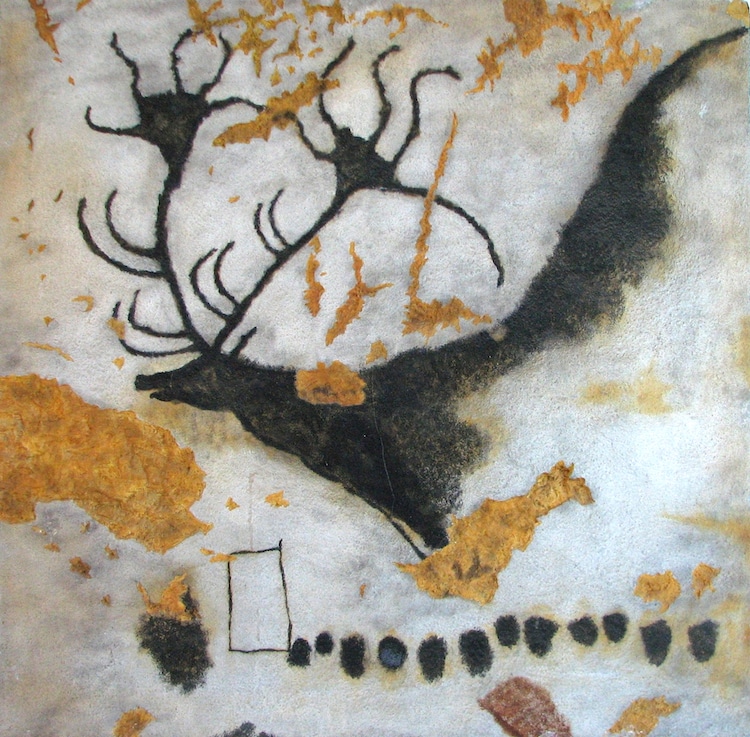
A painting of the Giant Deer from Lascaux (Photo: Wikimedia Commons, Public domain)
Touring the Cave
Lascaux cave is made up of several galleries of varying lengths and heights. The entrance of the cave leads directly to the main gallery called the Hall of the Bulls–the most famous section of Lascaux cave and one of the most important examples of Paleolithic Art. Measuring about 62 feet long, this long passageway features numerous paintings of bulls, horses, dear, and one unicorn. This corridor leads to two separate galleries, one of which is a dead end.
At the center of Lascaux is a semi-circular room called the Apse. Measuring about 15 feet in diameter, this area is completely covered in engravings of animals and abstract symbols. Most of the art of the cave is centered in this branch of it.
One of the most narrow passageways in the cave is the Chamber of Felines. This 100 feet long galley includes numerous images of felines and some horses at an unusual angle.
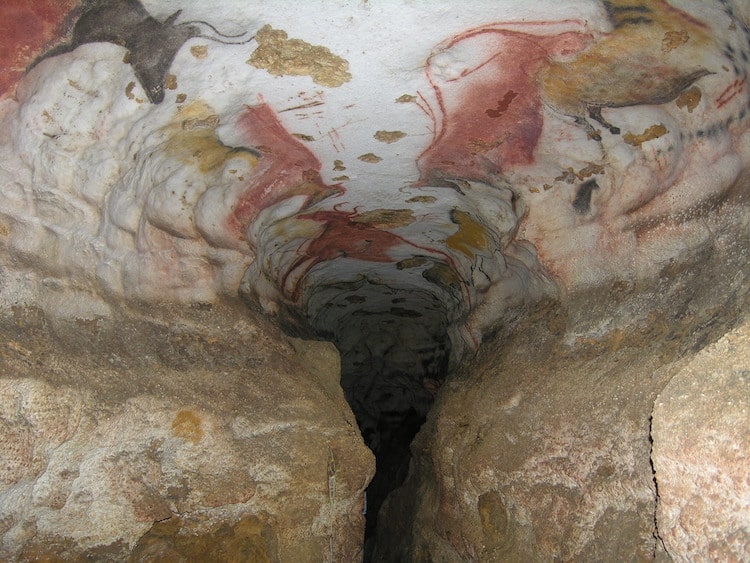
Interior of Lascaux Cave (Photo: Wikimedia Commons, CC BY-SA 3.0 IGO
Imagery
Over 2,000 figures cover the Lascaux cave. Most of these clearly capture the forms of animals that were indigenous to Europe in the Paleolithic era and that the artists would have hunted, including deer, musk-oxen, horses, aurochs, and bison. Some pictures also portray predators like large felines and bears. There is only one humanoid figure in the cave, which features a bird's head on top of a man's body.
Others images depict abstract symbols which have no clear meaning. These include dots, various lines (straight, parallel, divergent), and shapes. These are typically placed around the figurative drawings.
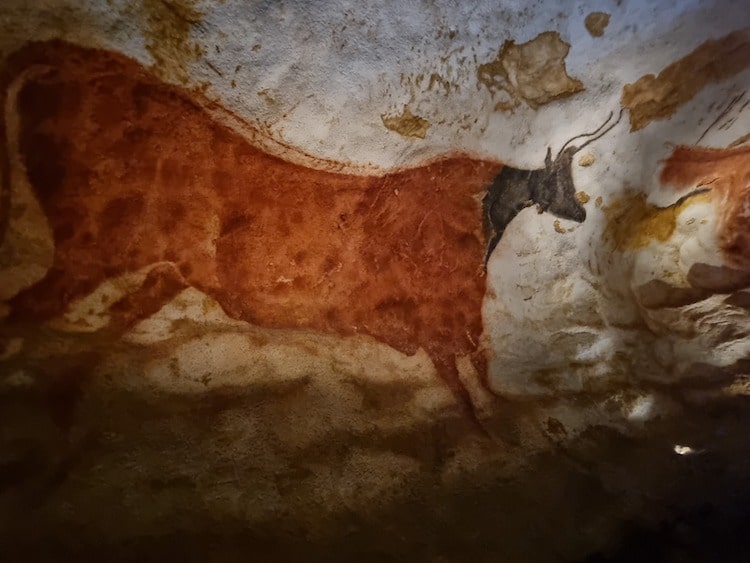
Painting of a bull (Photo: Wikimedia Commons, Public domain)
All of the art at Lascaux cave stands out for its incredible realism. These depictions not only exhibit an understanding of anatomy and realism from the artists but also a knowledge of how to communicate movement (such as running animals) and sequences (arrows aiming for the body of an animal).
Materials & Techniques
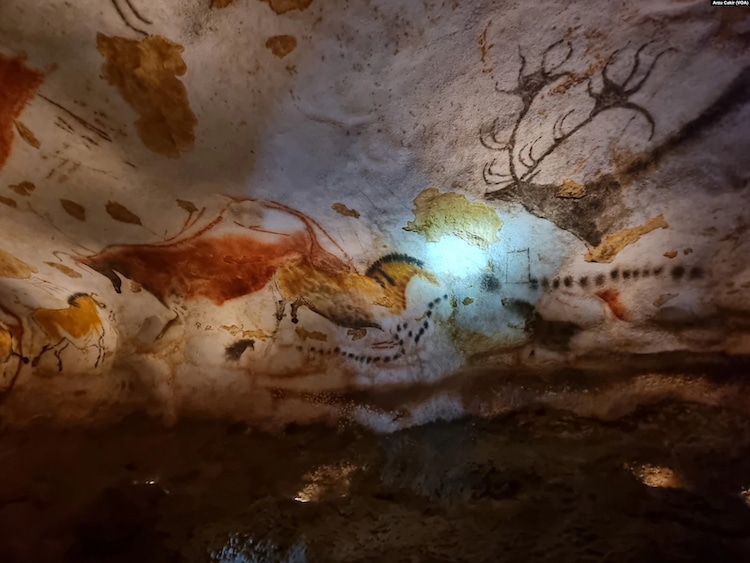
Interior of Lascaux Caves (Photo: arzu çakır via Wikimedia Commons, Public domain)
The art of the Lascaux cave features paintings, drawings, and engravings, which were used independently of each other and sometimes together.
Wall paintings of this period were not produced with paintbrushes. Instead, artists created outlines of figures using moss or hair and filled in large areas of color blowing by paint through a bone or wood tube (which had a similar effect to spray painting). The paint pigments were made from local minerals, including iron oxides (red) and charcoal (black). There is evidence that the inhabitants built a scaffolding system in order to create pictures on the ceilings.
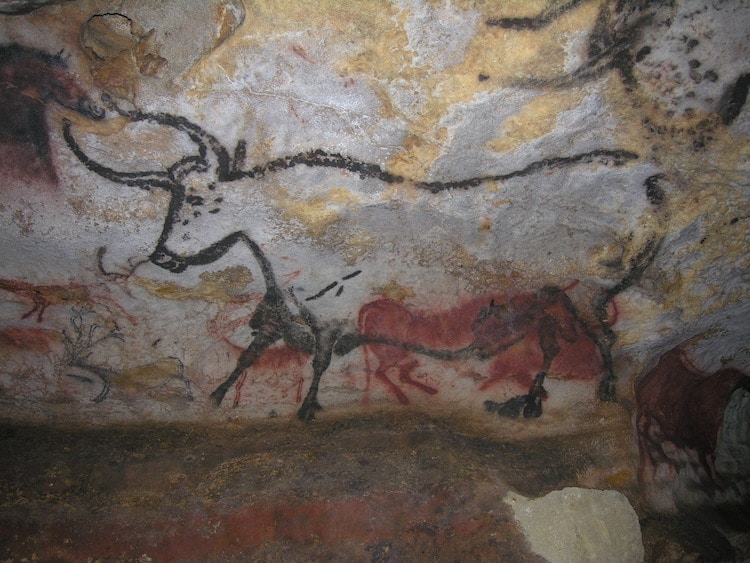
Painting of a bull (Photo: Wikimedia Commons, CC BY-SA 3.0 IGO International)
Engraving required the artist to scratch away at the surface of the stone wall using an equally hard material (most likely a rock). This technique produced a drawing-like effect on the wall, in which the outline of the subject appears slightly lighter than the rest of the surface.
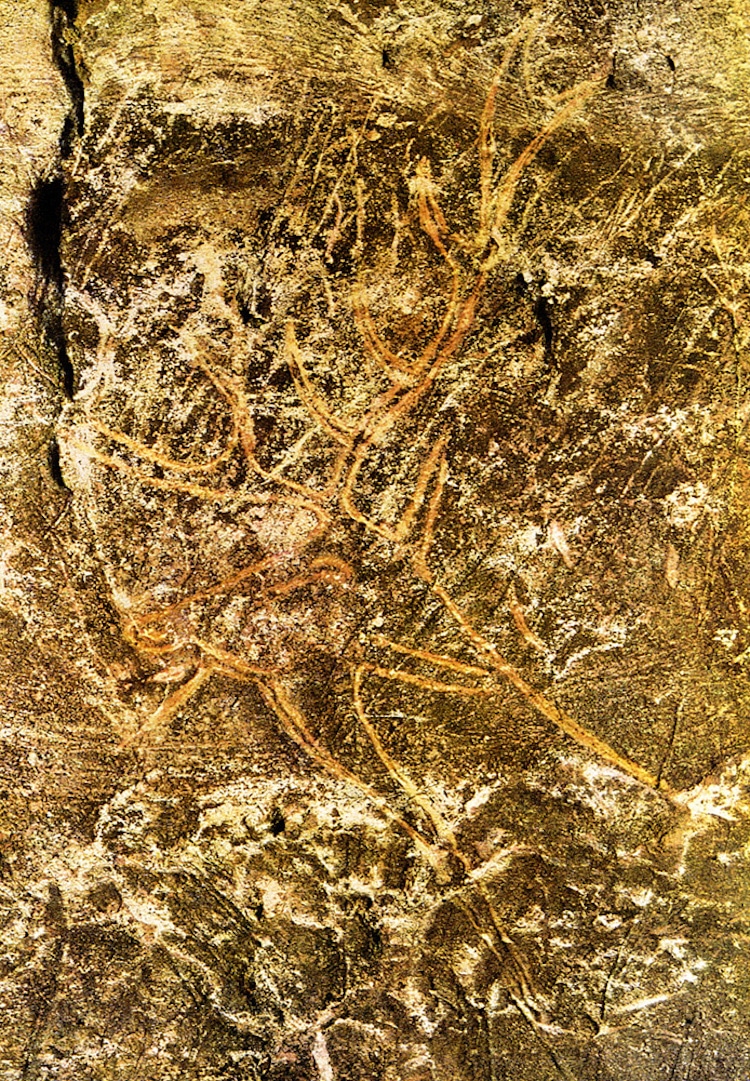
Engraving of a stag (Photo: Wikimedia Commons, Public domain)
Interpretation
There are many theories about why these paintings were made. Due to the focus on animals and hunting, some speculate that they were made in celebration of a successful hunt, or as a ritual prior to hunting.
Another theory proposes that these images were made to accompany oral storytelling, during which people would have gathered in the cave near a campfire.
Related Articles:
6 Incredible Facts About the Prehistoric Altamira Cave Paintings
15,000-Year-Old Bison Sculptures Are Perfectly Preserved in a French Cave
Archeologists Discover Children’s Handprints in Cave From 200,000 Years Ago
